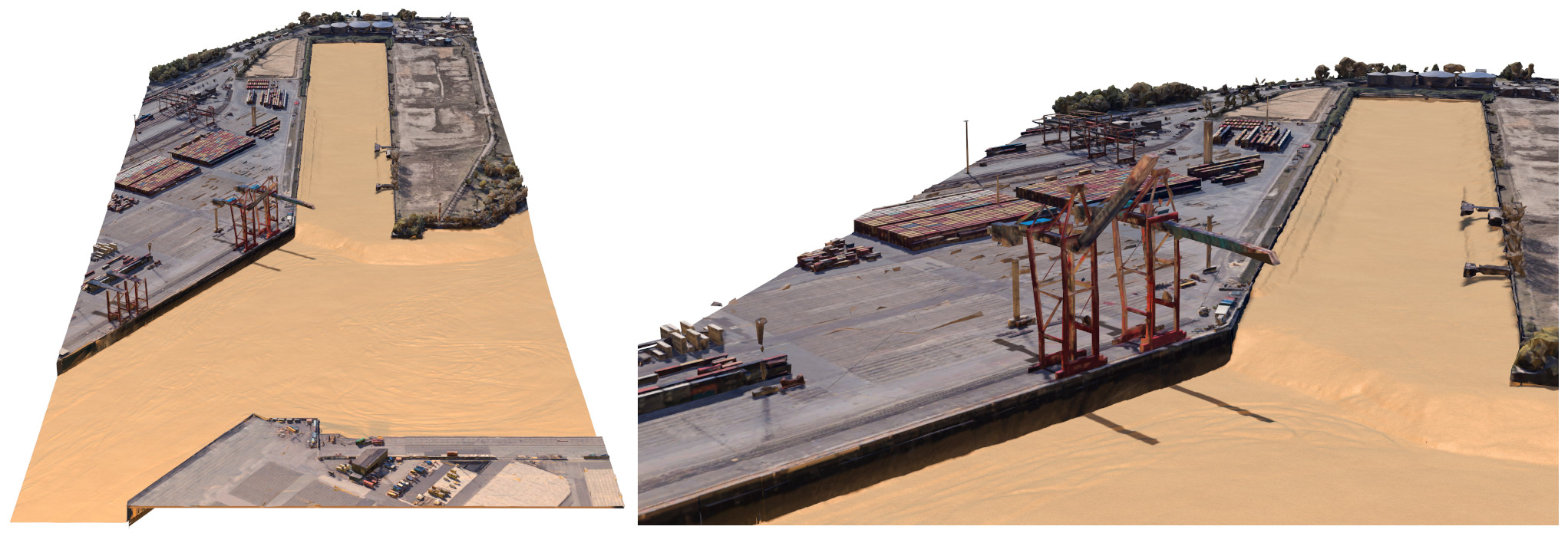To accelearate the pace of our developments, and to increase the chances of success during testing, our partners from TUM are working on creating digital twins of the test sites. This is especially relevant in the context of the ongoing CoVID-19 pandemic, which makes travelling difficult which lowers the opportunities for actual testing. In collaboration with HPA, they have created a digital twin for one of our test sites in the Port of Hamburg.

The Port of Hamburg counts an area of roughly 7,000 m² and is considered one of the busiest ports in the world. The choice is though, when looking for a place offering an undisturbed but versatile test environment for the SeaClear system. The petroleum port is one of the less frequented areas, very spacious to fulfill navigation tasks and offering sufficient water depth for the Tortuga ROVs to explore the sea floor. Due to the close proximity to the main current of the Elbe river, it will surely show the effects of tidal flows, and the characteristic turbidity to challenge the SeaClear performance.
